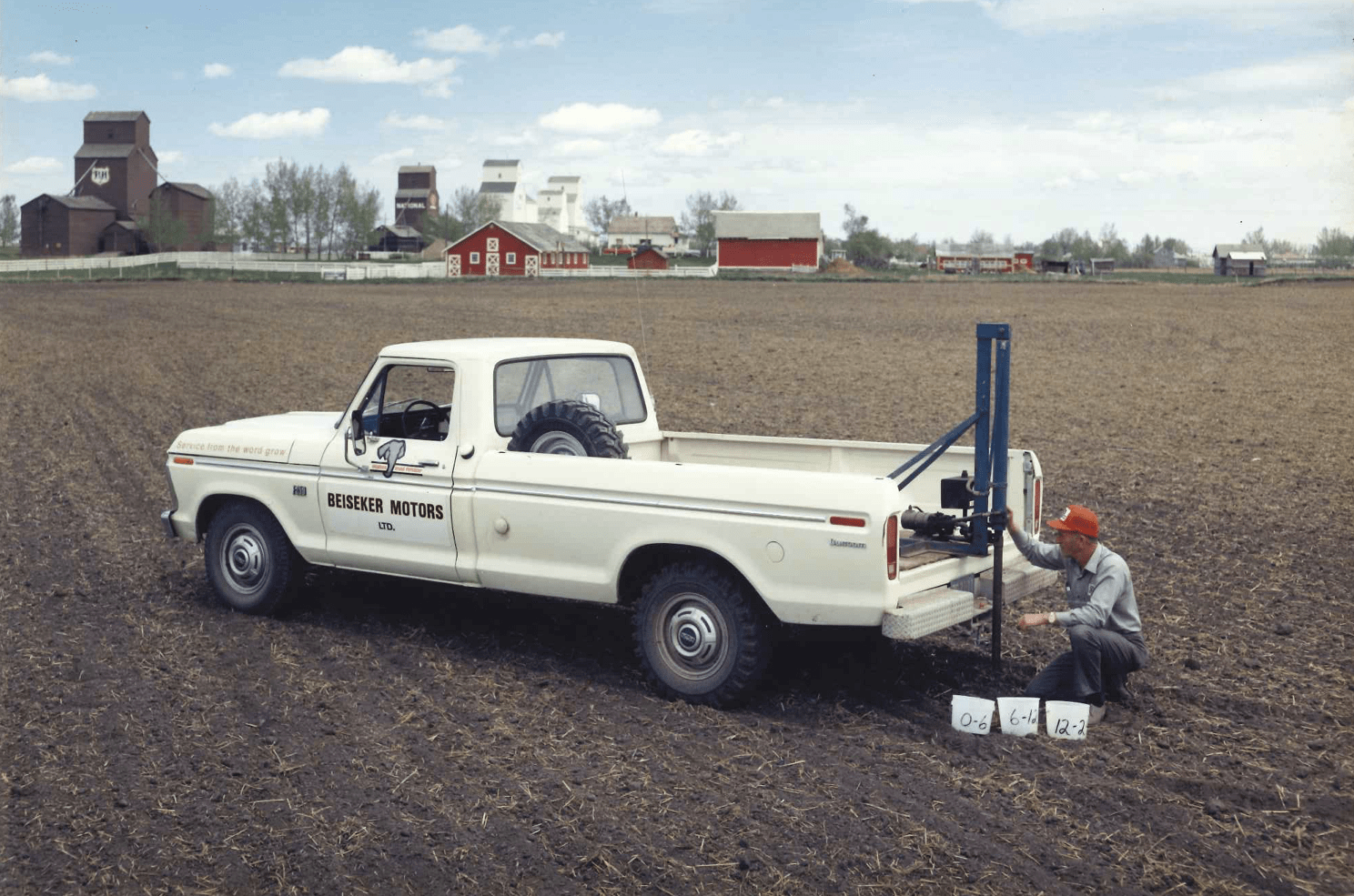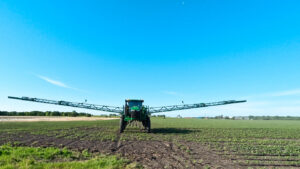Editor’s Note: Remi Schmaltz is CEO of Decisive Farming, a Canadian software program for farms offering precision agronomics, data management, crop marketing, and telematics services. He took over his family’s ag retail company DynAgra Corp with his brother where he started incubating new technologies in farming resulting in the launch of Decisive Farming in 2011.
Here Schmaltz writes about soil analysis, where it started, and how it’s changing.
Some of my most enduring childhood memories are of my grandfather Felix working at our family-owned farming business in southern Alberta back in the early 1980s. Whether it was selling fertilizer or explaining how the latest piece of equipment worked, he always took great pride in being ahead of the curve when it came to agricultural innovation.
Soil testing, or soil analysis, has certainly evolved since my grandfather’s time.
Back then, it was still commonplace to see a farmer or agronomist use a hand-held probe to punch a hole in the soil to grab a chunk of dirt for testing. As usual, my grandfather was ahead of the curve. He started using a hydraulic probe attached to the rear of his truck to collect soil samples back in the ’70s as part of his service offering to growers at Beiseker Agri Services (later renamed to DynAgra).
Soil analysis know-how has grown by leaps and bounds since then. Today, there are all kinds of automated soil sampling systems such as Falcon, Teralytic, Autoprobe, and companies such as Decisive Farming have developed their own proprietary sampling system that is designed to quickly collect high-quality samples using GPS technology and provide precise and efficient measurements. In fact, one Dutch-based manufacturer SoilCares has even created a hand-held device that they claim can analyze soil samples on the spot and wirelessly transmit the data anywhere in the world. These technologies have the potential to provide a wealth of data that farmers and service providers can use to make their operations more efficient.
It’s not just the equipment and technology being used to collect this information that has changed, it’s also the overall approach to soil analysis that is evolving. At one time, soil testing focused almost exclusively on macronutrient testing and over time it has expanded to also include micronutrients, organic matter, and pH levels. We are beginning to see far more attention being paid to what else is going on in the soil, especially at a microbial level. Soil is full of living, breathing organisms. In fact, it’s the largest living organism on earth, yet humans know far more about our solar system than we do the top six inches of soil on this planet.
By learning more about the different organisms that live in the soil, and the role they play in soil health, growers will be far better positioned to maximize their return on investment, increase yields and crop quality while ensuring environmental sustainability.
In farming, it’s all about having accurate data to make more valuable decisions. At the end of the day, a farmer is investing in a field and anything we can do to make him or her as efficient as possible in terms of the inputs they put in the field is good because it reduces risk and increases profitability. Industry standards say you typically need 1.8 pounds of nitrogen to grow a bushel of wheat. But what if we can get that number down to 1.6 or 1.4 without depleting soil nutrient levels?
That’s where soil analysis comes in, by allowing us to hone the efficiency of the soil for each area of the field based on data such as organic matter, we can determine exactly what is required to achieve maximum efficiency.
One of the keys to learning more about the soil that provides us with the food we eat is being far more diligent in our approach to how we analyze it. It used to be that a grower would just do what their grandfather did, or they might take just one sample from a 160-acre field and formulate a plan based on that limited data. That simply won’t cut it anymore.
Today, as many as 300 different cores might be required from that same field with that data being used to ground truth imagery and computer-generated maps to create more accurate recommendations in the multiple management zones found in the field.
But even the most accurate data doesn’t mean much if it can’t be easily utilized and implemented on the farm. Some estimates indicate that only one in four growers annually soil test in North America. Part of the problem is that there has been lots of inaccurate testing done over the years. If you test soil from a hilltop one year and near a slough the next, the results are going to be radically different and aren’t going to provide any value to understanding the change in the soil year over year.
Understanding the biological characteristics of soil is particularly important. We’re always looking for ways we can produce more with the resources we have. That’s where a better understanding of the biological makeup of soil comes in and companies like A&L Canada Laboratories have recently launched new services to address this segment of the market. Consider that a bag of corn seed has a yield potential of about 500 bushels per acre, but typically produces only 200 to 250 bushels. By better understanding the biologicals in that soil we could substantially boost both yield and profit while maintaining or even reducing input costs.
While the advent of satellite technology has begun enabling us to identify some problem areas in the field, that information is essentially useless if we don’t know what is causing the problem. Soil analysis can help us identify the root of the problem, find a solution and then determine a course of action. We need to thoroughly evaluate and utilize each layer of information to build a clearer picture of the entire soil environment to make informed management decisions.
The growth of precision agronomics and the use of analytics in farming needs to be closely linked to soil analysis, but we can’t look at it in isolation. Soil analysis is an essential piece of the puzzle (as stated in 4R Nutrient Stewardship), but we need to look at an even broader picture and that includes equipment, the type of seed being used and other components such as weather and past performance to make decisions on how to grow a crop in the most profitable and sustainable manner.
Today, soil testing offers some amazing opportunities for farmers to find new efficiencies within their operations and to increase yields but we are just starting to scratch the surface. In the next five years with the amount of data being captured at the field level we are going to see some amazing breakthroughs that will change our view of one of our most precious resources: soil.
Photo: Remi Schmaltz (pictured is Schmaltz’s grandfather)




